2021 Yamaha Tracer 9 GT Review
By Rennie Scaysbrook – Photography by Joseph Agustin
The Yamaha Tracer has only been around since 2015 and already it’s gone through two name changes. First, we had the FJ-09, which then morphed into the Tracer 900 GT in 2019, which has now morphed into the Tracer 9 GT for 2021. If Yamaha’s aim was to confuse its punters, they’re doing a good job of it.
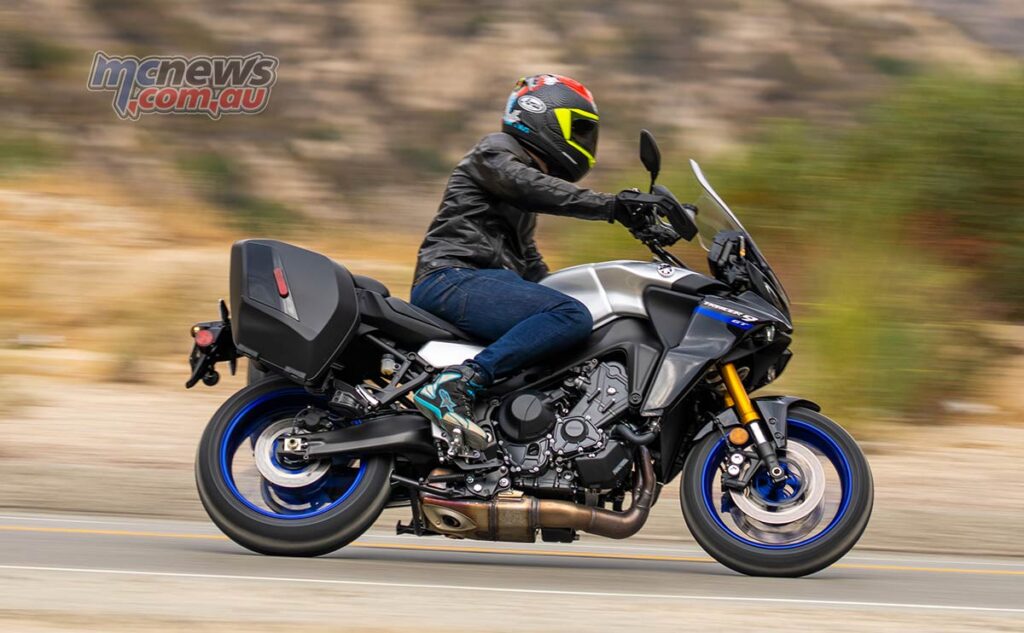
The motorcycle itself has changed with each new namesake. Always closely linked to the technical advancements of the MT-09 nakedbike, the 2021 year marked the biggest change in the motorcycle since its 2015 release to coincide with that of the MT.
In short, the $23,299 Yamaha Tracer 9 GT for 2021 is essentially all new. In practice, it’s still pretty similar to what it was before—just improved in little areas everywhere. As they say, one percent improvements add up, big time.
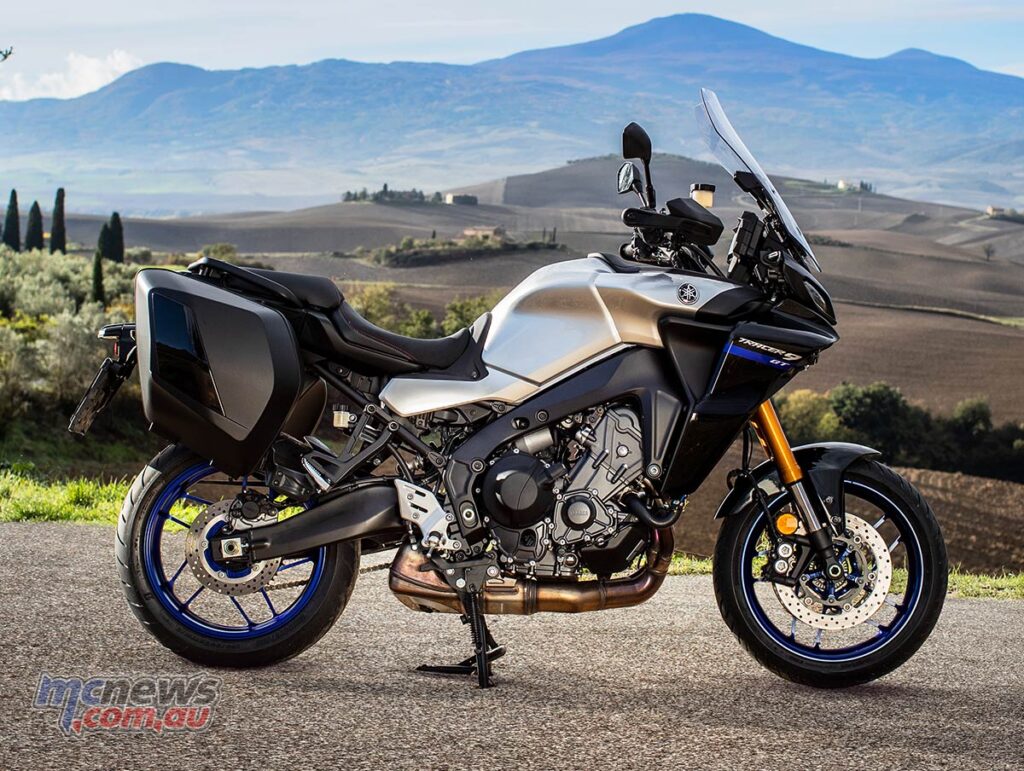
In recent years, Yamaha’s shied away from joining the associated arms races held by the Europeans. Take the MT-10, for example. Not quite at the level of outright top-end performance delivered by a Streetfighter V4 S or Super Duke, but happy playing in its own little sand pit on the fringes of the class, and with its own charms. The same can be said for the FJ/Tracer 900/Tracer 9. Not quite in the same league as a BMW S 1000 XR or Multistrada, but happy to forge its own path with a glorious three-cylinder soundtrack to boot.
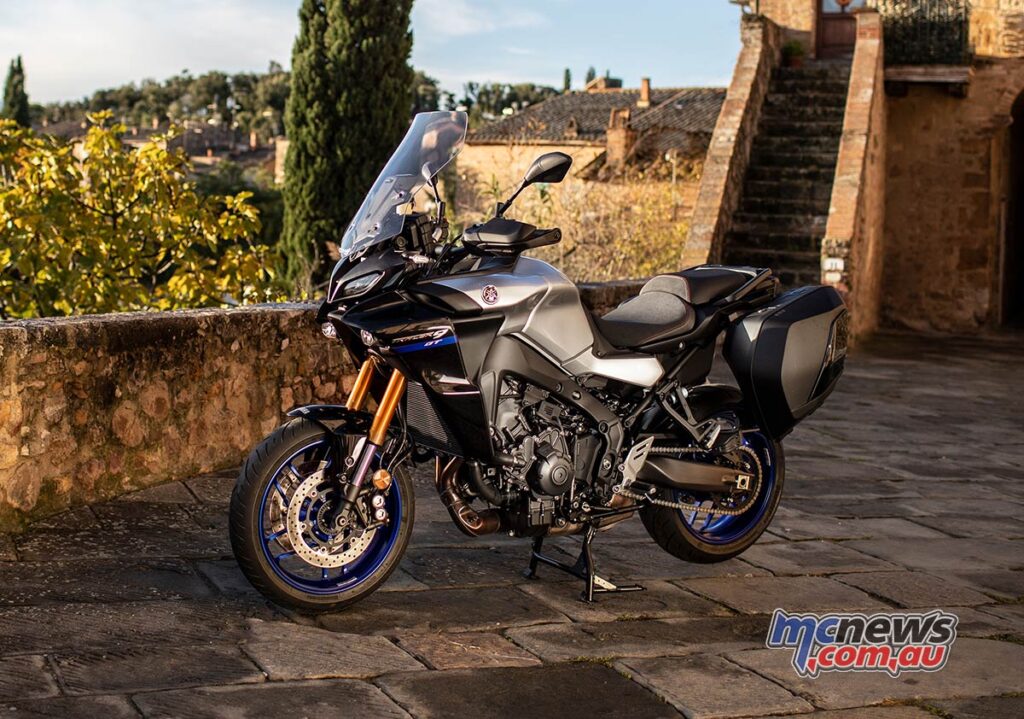
Although the Tracer has traditionally carved its own path, there was one area it simply had to follow the well-trodden trail—electronics. As such, the new bike is a pretty big deviation from last year with a six-axis IMU, KYB electronic suspension, cruise control, up and down quick shifter, heated grips, four riding modes (one more than last year), traction, slide and wheelie control, LED lighting front and rear, svelte 30L panniers, a 12V power socket and a funky split-screen dash. Oh, did I mention this is all standard fitment? Normally manufacturers will spring you for at least a couple of those as optional extras, but Yamaha’s come to the party packing those goodies as part of the purchase price. Happy days.
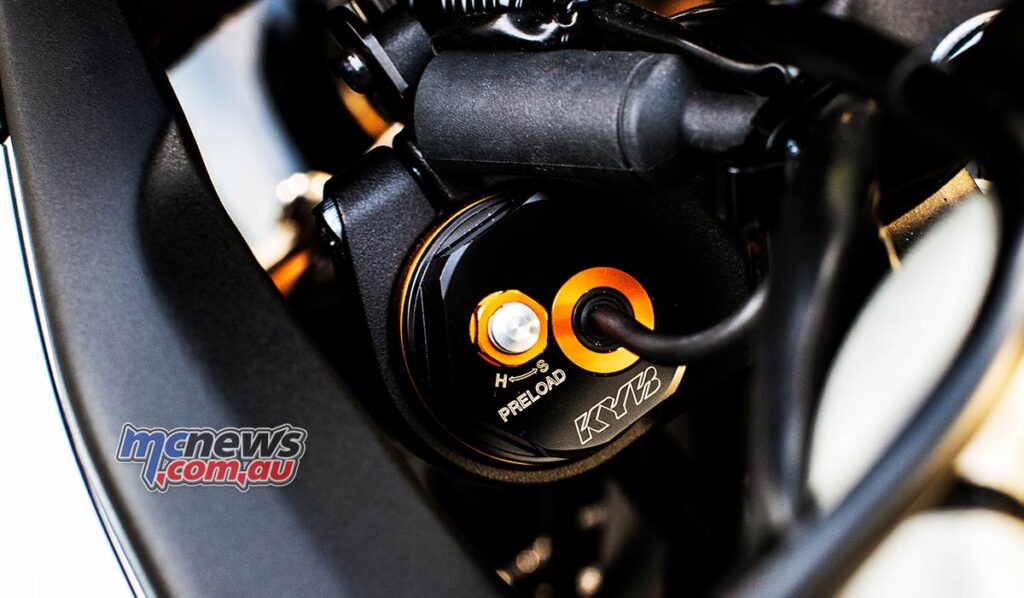
As happened with the MT earlier this year, the Tracer gets a new three-cylinder motor boosted from 847 cc to 890 cc and, with it, a host of steady improvements to smooth out the bratty behaviour that’s been intrinsic to this motor since we first saw it in 2013.
Up top sits a new intake, airbox, cylinder head, valves, intake and exhaust cams, new injectors and throttle bodies. At the bottom Yamaha’s fitted a 3 mm longer stroke crank, new forged pistons, 1.5 mm shorter fracture-split conrods, a redesigned exhaust and a gearbox housing taller first and second gears and a new slip and assist clutch.
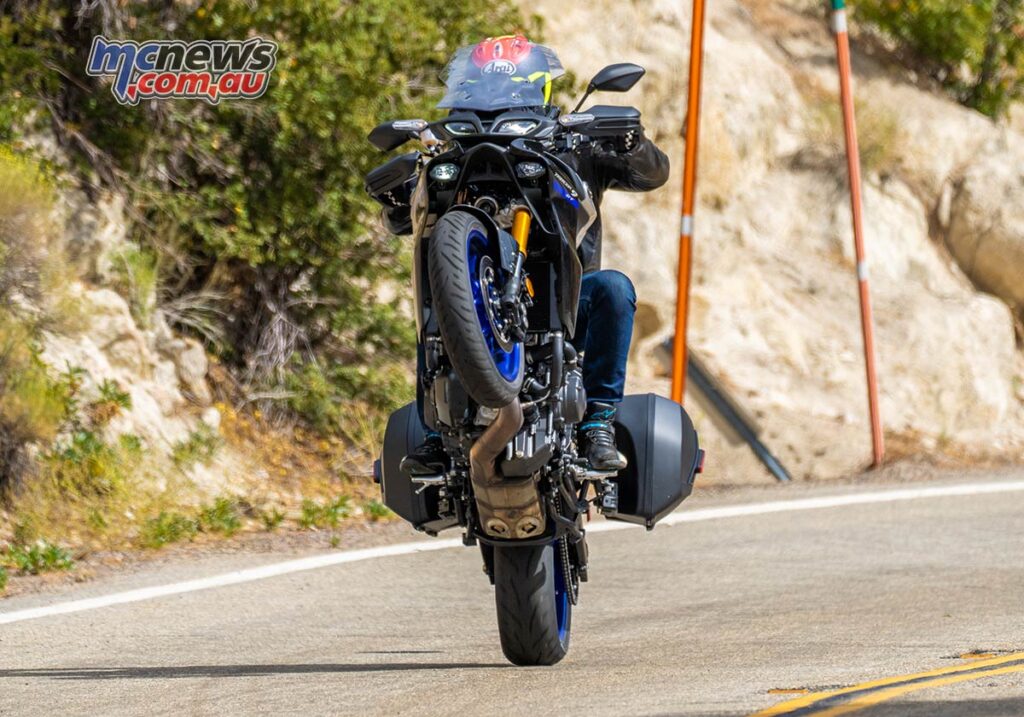
Almost nothing from the 2020 motor has been left either employed or unmolested when talking of the 2021 edition. Yamaha is claiming a nine percent improvement in combustion efficiency with the triple, and increased fuel economy now quoted at 4.8 litres per 100 km (something I cannot confirm from my test).
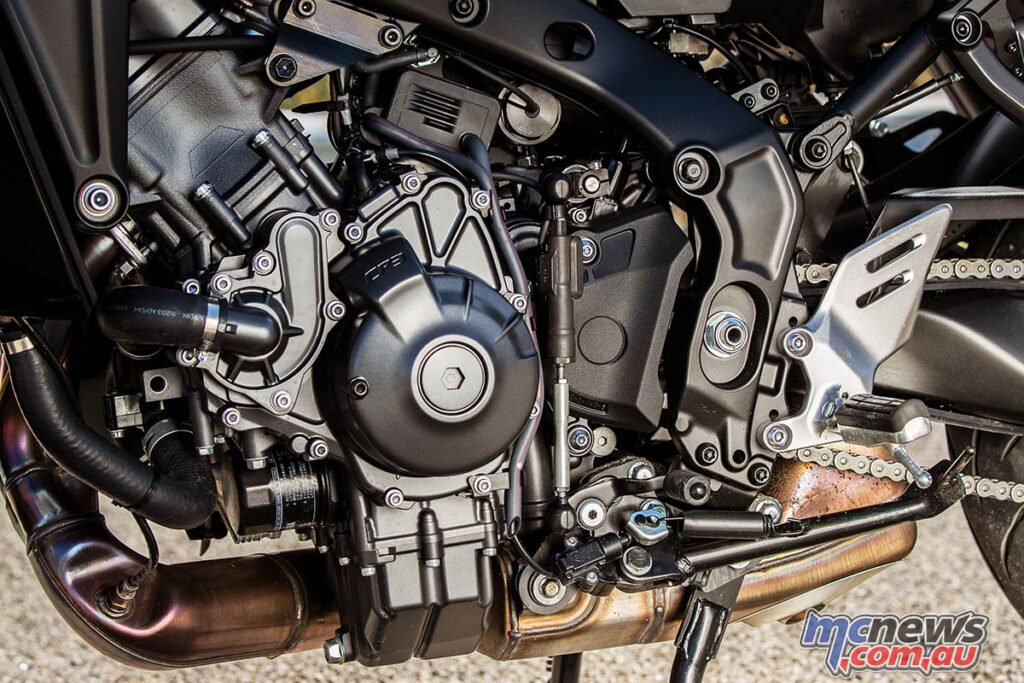
What I can confirm is the performance is the performance on offer from the revamped motor gives credence to the idea of Yamaha forcing its bratty sports tourer to grow up a bit. There’s more torque everywhere but the big factor for me was the more civilised throttle response that made low rpm throttle openings a much smoother affair than in times past. This allowed me to ride that beautiful wave of torque smoothly until about 9000 rpm, which is 1000 rpm below the redline. It doesn’t really pay to wind this motor out like a four-cylinder sportsbike unit. Use the abundance of torque to your advantage and let the triple pull you from corner to corner, and your ride on the new GT will be a beautiful one.
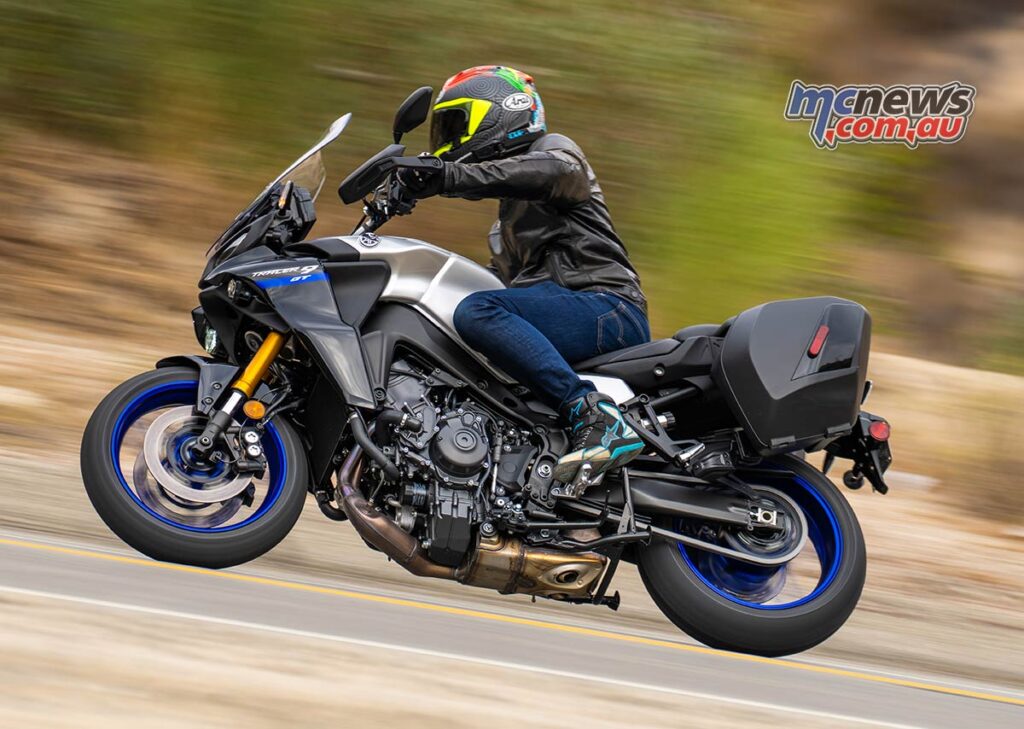
With those four riding modes at your disposal, you’ll easily be able to find one that suits your style, I left it in level two for the majority of the test. Level one gives a bit too much of a torque hit at low rpm, while levels three and four are really only for rain riding, not offering the correct amount of urgency for when I want to get on the move.
Level two offers a nice balance and lets the motor do 98 percent of what it can in level one, just without the snatchy throttle response.
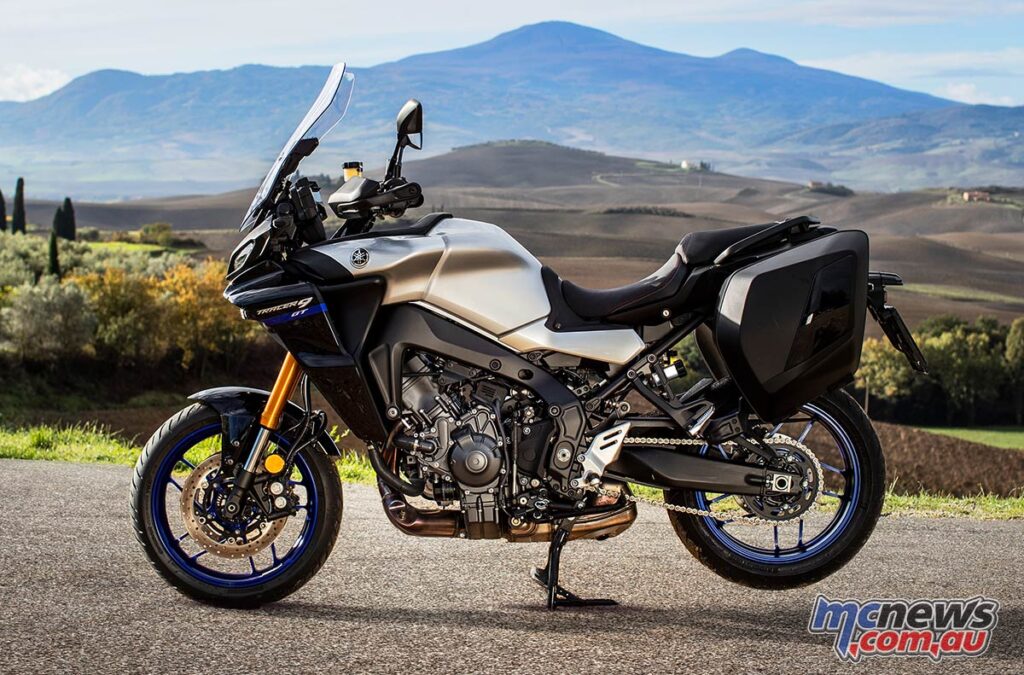
Playing a solid back up to the improved engine is the revised chassis, which is more than just a spit and polish. The architecture has changed significantly, with the longer, stiffer swingarm’s pivot now mounted in the traditional place on the inside of the frame, rather than the outside as the machine had previously used.
This, combined with the new KYB suspension, makes the Tracer a gem in the mid-corner as you gradually feed the power back in and the chassis stays perfectly planted to your chosen line. KYB’s given you electronics that are far simpler to use and understand than many of the smart suspension units out there. There’s only two settings—A1 and the softer A2—with compression and rebound adjustment on the front and rebound only on the rear. Preloads are done the traditional way, with a hand dial on the rear and nut on top of the fork leg.
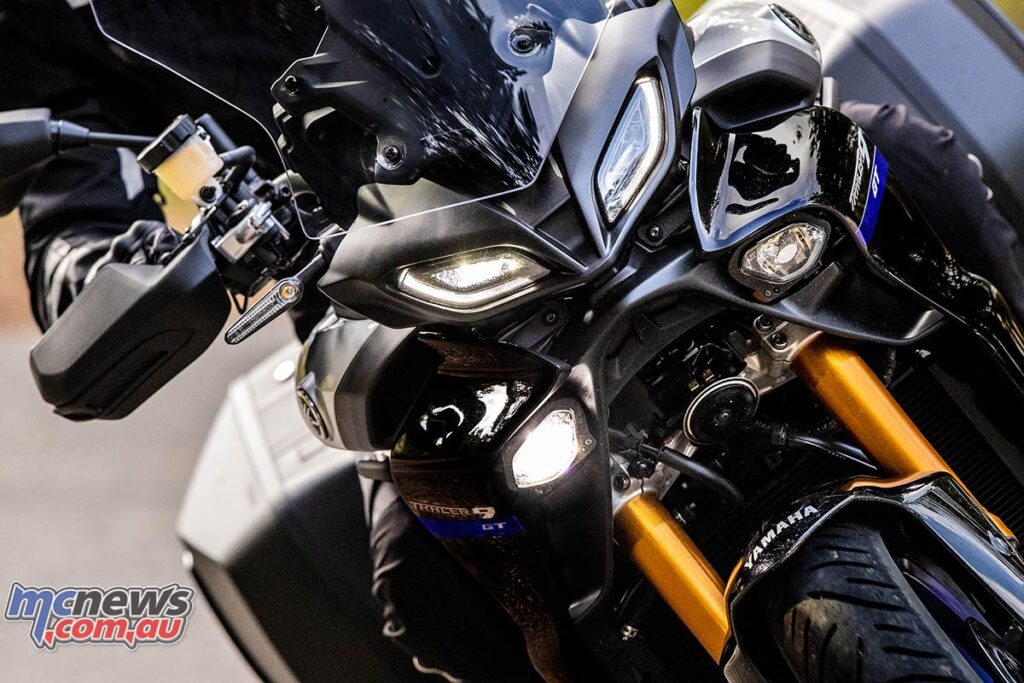
I found A1 was only really applicable if the roads were ultra-smooth. The ride can become a bit harsh in this mode, so I found it better to use A2 and deal with the slightly spongy behaviour thrown up by the suspension. Everything the suspension does gets mitigated by the IMU, which monitors the fork and shock action, mixing it together with info from the bike’s lean and pitch angle, gear and throttle position and brake pressure to adjust the damping accordingly. While not quite as smooth as what you’ll get on a high-end Ohlins Smart EC 2.0 set-up on something like a Ducati Streetfighter, it’s also easier to understand and use effectively. In some cases, too much of a good thing is still too much. KYB seems to have hit a nice compromise with its electronic springers.
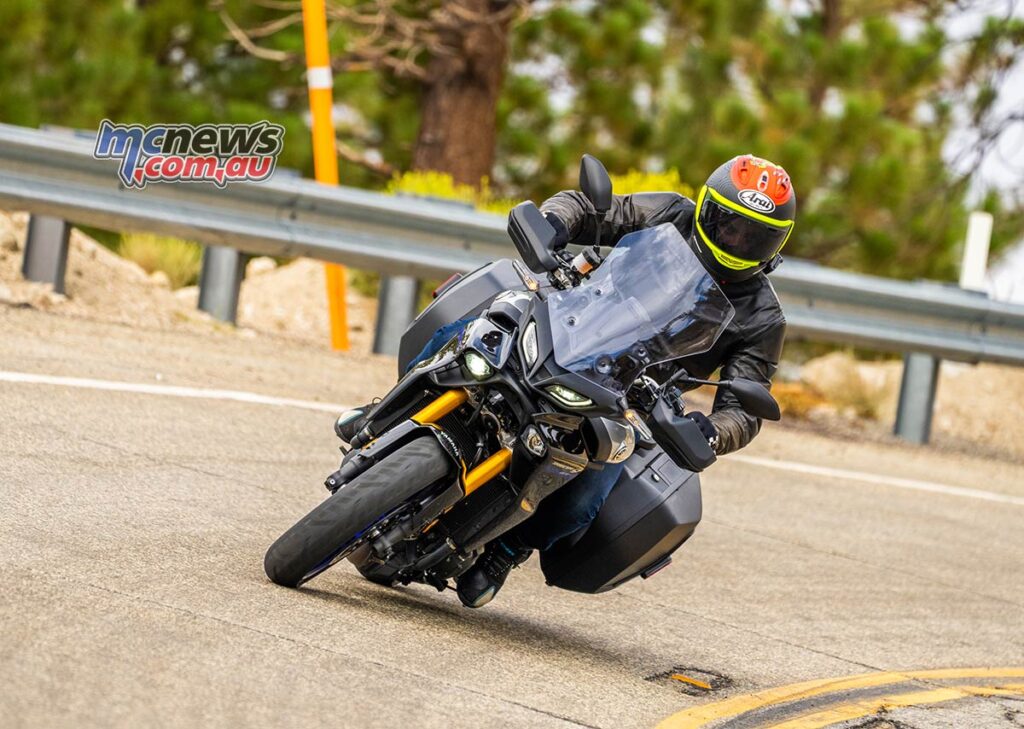
The Tracer gets the Yamaha Brake Control system for the ABS circuit for 2022, which is basically linked front and rear brakes with various maps. BC1 is the base, while BC2 is the more intrusive version. I’m not a fan of linked brakes for the most part, and I found the Yamaha’s system to be too invasive on the riding. When you’re leant over and you use just the rear brake, you’ll notice the front brake lever will depress slightly, which is an odd and somewhat uncomfortable feeling—at least for me. Give me regular brakes any day and I’ll figure out the rest.
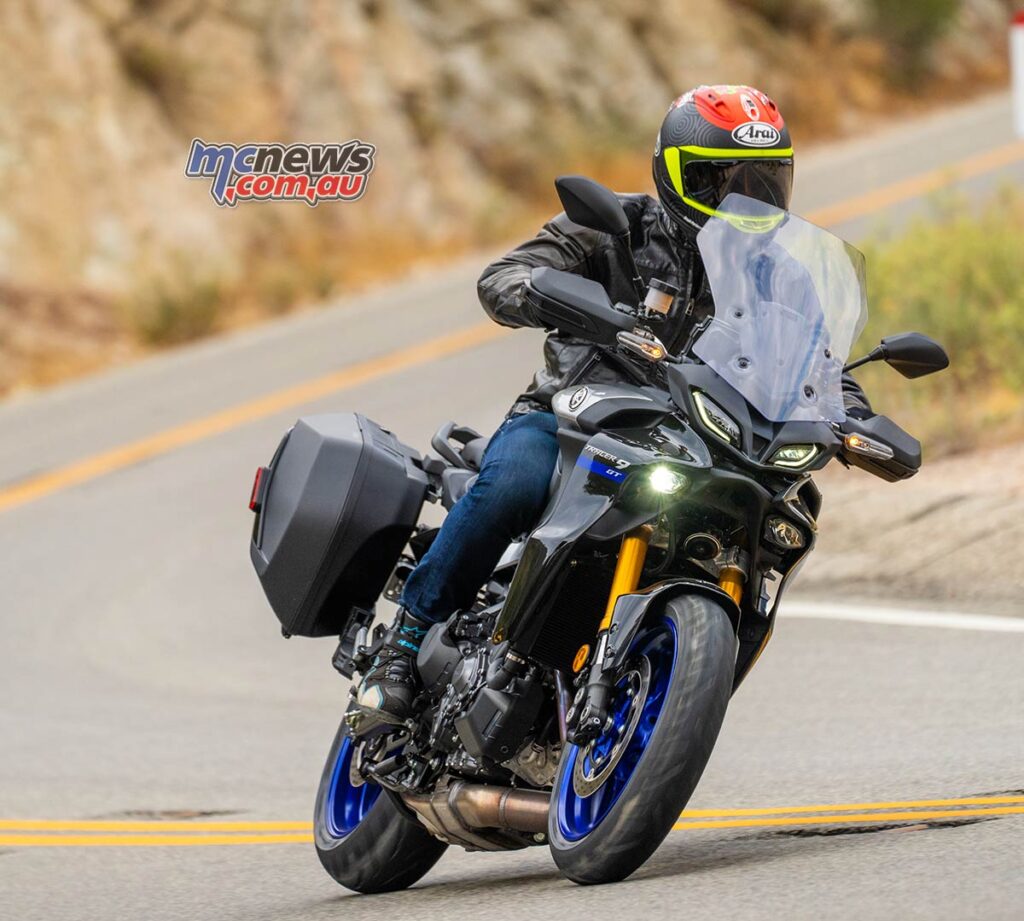
Yamaha’s had a few issues of late with front brake performance (the 2021 R1 hurts bad with this), but overall bite and power is ample enough for the Tracer. This is probably so given the Tracer’s MO is not at the racetrack but in traffic and, more fondly, the twisting mountain roads we all dream of at 2:30 pm on Wednesday, and thus the brakes don’t get hammered as hard.
Switching to another point I’m not that wrapped with, the looks. Yamaha’s taken a bike that wasn’t that hard on the eye and uglied it. The sharp lines that adorned the headlight surrounds of 2020 are now gone, but I guess when you consider the Tracer now has cornering lights and LED’s, the trade-off isn’t too bad.
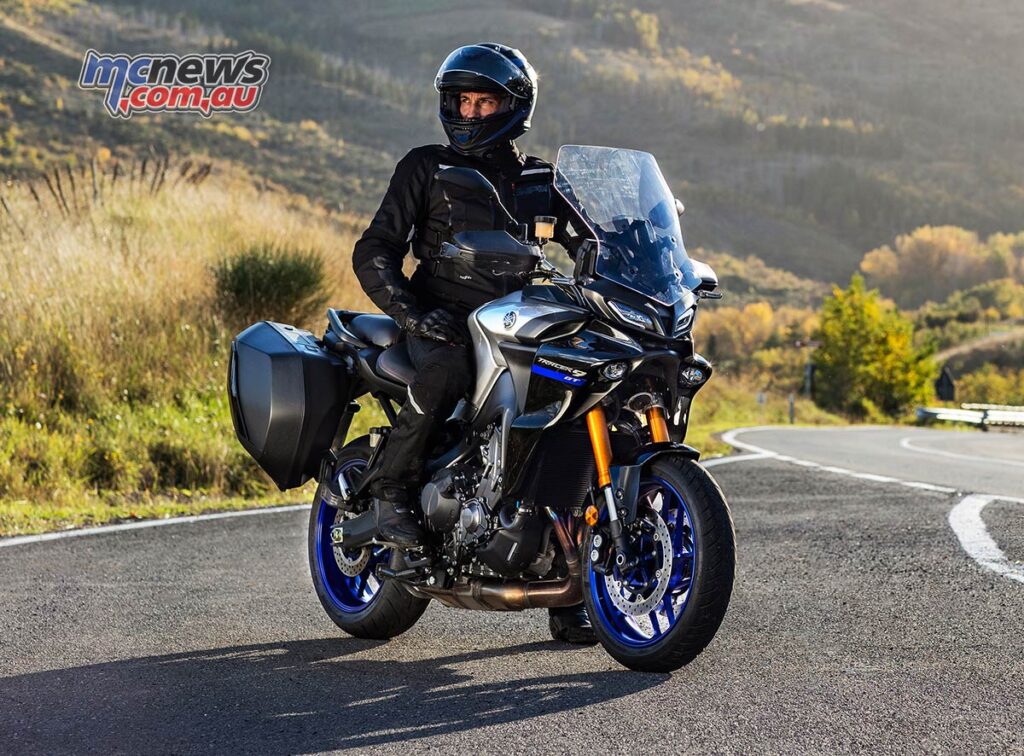
Interestingly, Yamaha’s gone for a split screen dash idea that gives the bike an almost cartoon-like face (parents out there, it looks like the Disney character Wall E). There’s a huge amount of information now easily accessible on the dash, such as twin fuel economy meters and all the adjustments for suspension, modes, etc, but it isn’t customizable. If it were, this would likely be the best dash on the market today. As it stands, I’ll give it a B+, but it is very easy to navigate and understand.
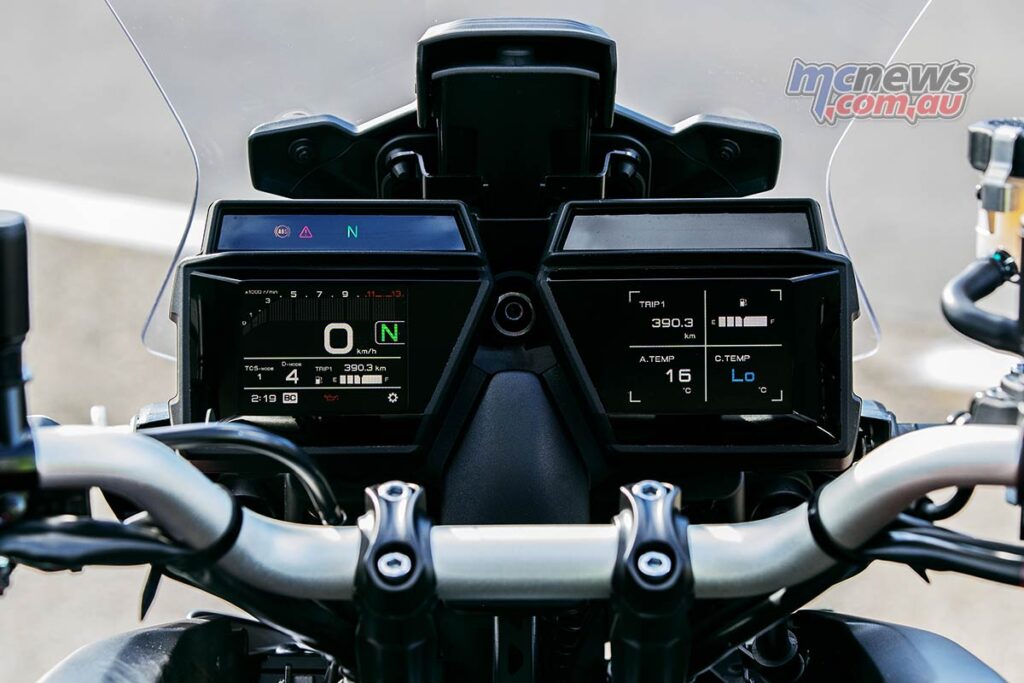
The Yamaha Tracer 9 GT is still very much like it was, just grown up. The 2021 package is more refined than ever, offering pretty much everything the big sports touring guys from Europe do, but at a far more affordable price and with the added bonus of a ton of extras you don’t have to pay extra for. Little things like the linked brakes and odd ball face aside, I think Yamaha’s done really well with the third version of the Tracer line up. I just hope they don’t change the name any time soon.

| 2021 Yamaha Tracer 9 GT Specifications | |
| Engine | Liquid-cooled, 4-stroke, DOHC, 4-valve, 3-cylinder |
| Displacement | 889 cc |
| Bore x Stroke | 78.0 x 62.1 mm |
| Compression Ratio | 11.5 : 1 |
| Lubrication System | Wet Sump |
| Fuel Management | Fuel Injection |
| Ignition | TCI |
| Starter System | Electric |
| Fuel Tank Capacity | 19.0 L |
| Final Transmission | Chain |
| Transmission | Constant mesh 6-speed |
| Frame Type | Diamond |
| Suspension Front | Telescopic forks, 130mm travel |
| Suspension Rear | Swingarm (link suspension), 137mm travel |
| Brakes Front | Hydraulic dual discs, 298mm |
| Brakes Rear | Hydraulic single disc, 245mm |
| Tyres Front | 120/70ZR17 M/C (58W) Tubeless |
| Tyres Rear | 180/55ZR17 M/C (73W) Tubeless |
| Length | 2175 mm |
| Width | 885 mm |
| Height | 1430 / 1470 mm |
| Seat Height | 810 / 825 mm |
| Wheelbase | 1500 mm |
| Ground Clearance | 135 mm |
| Wet Weight | 220 kg |
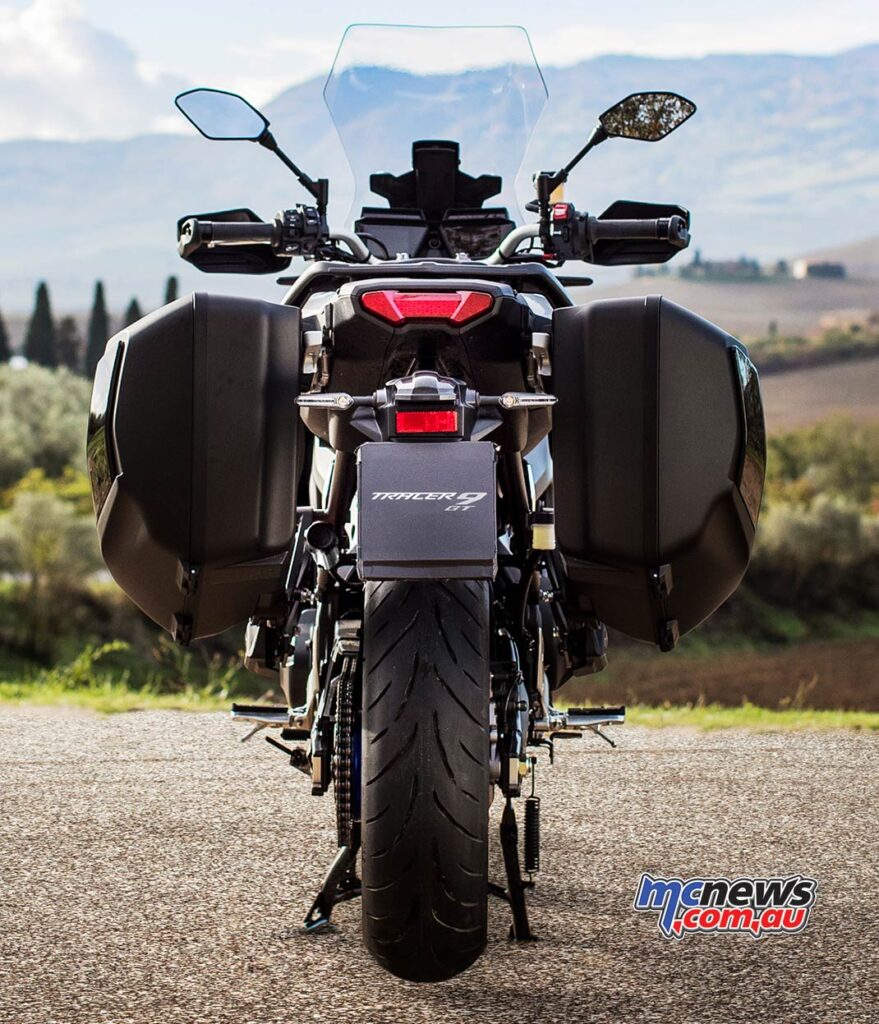
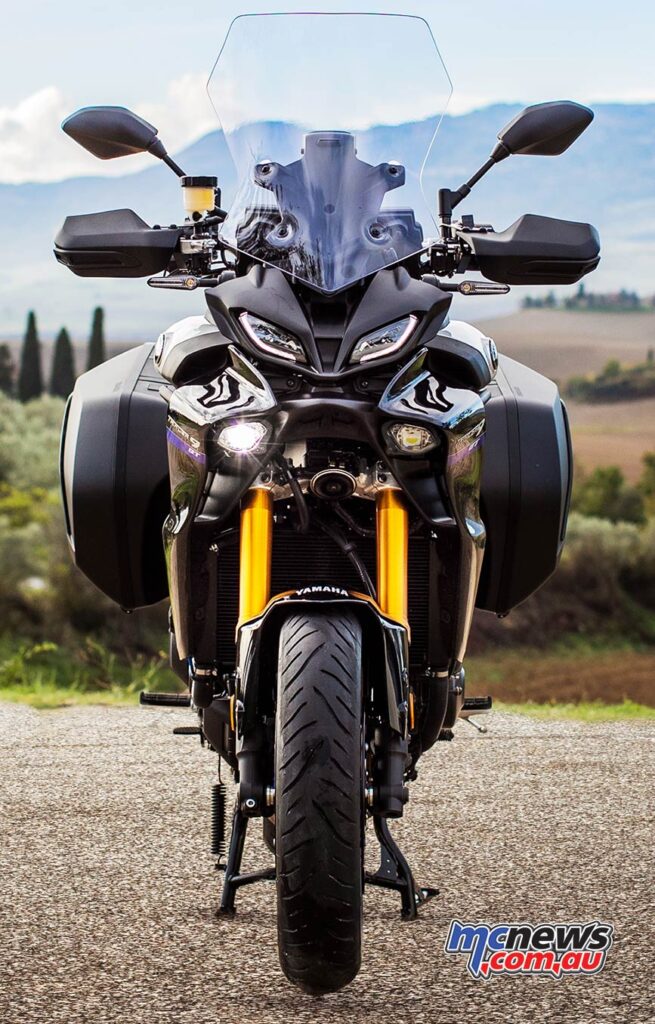
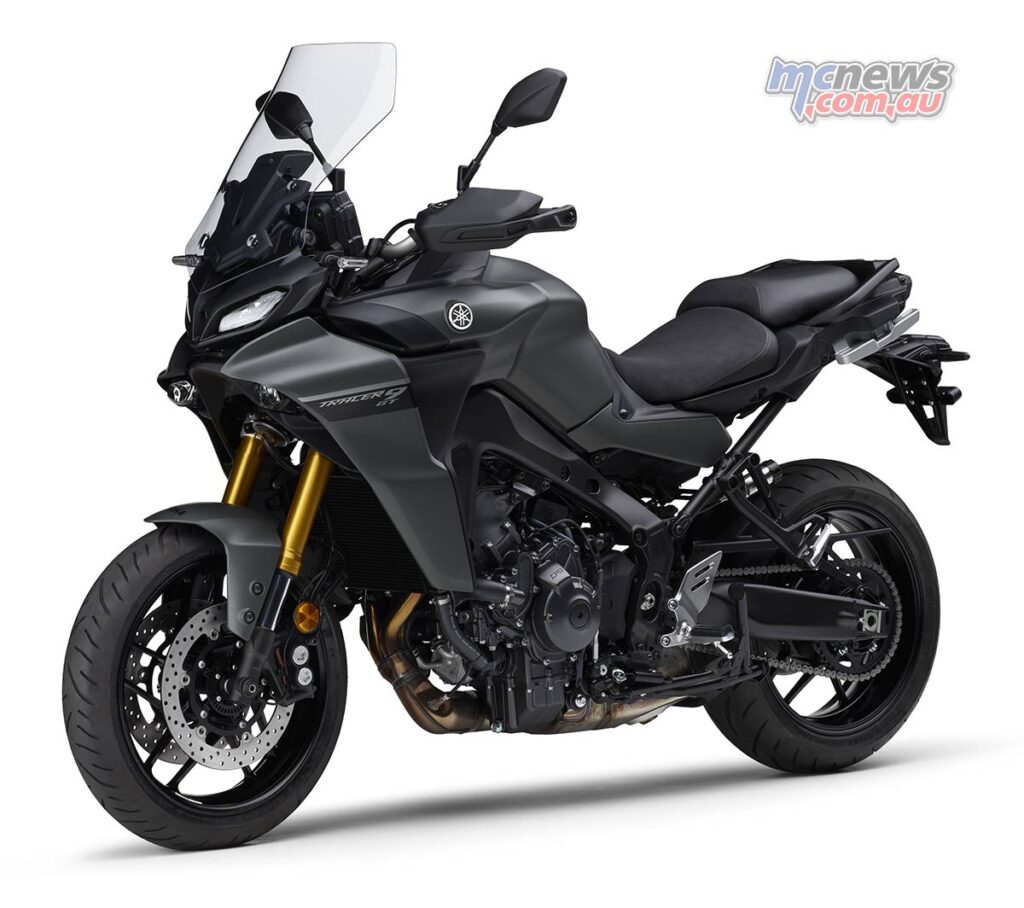
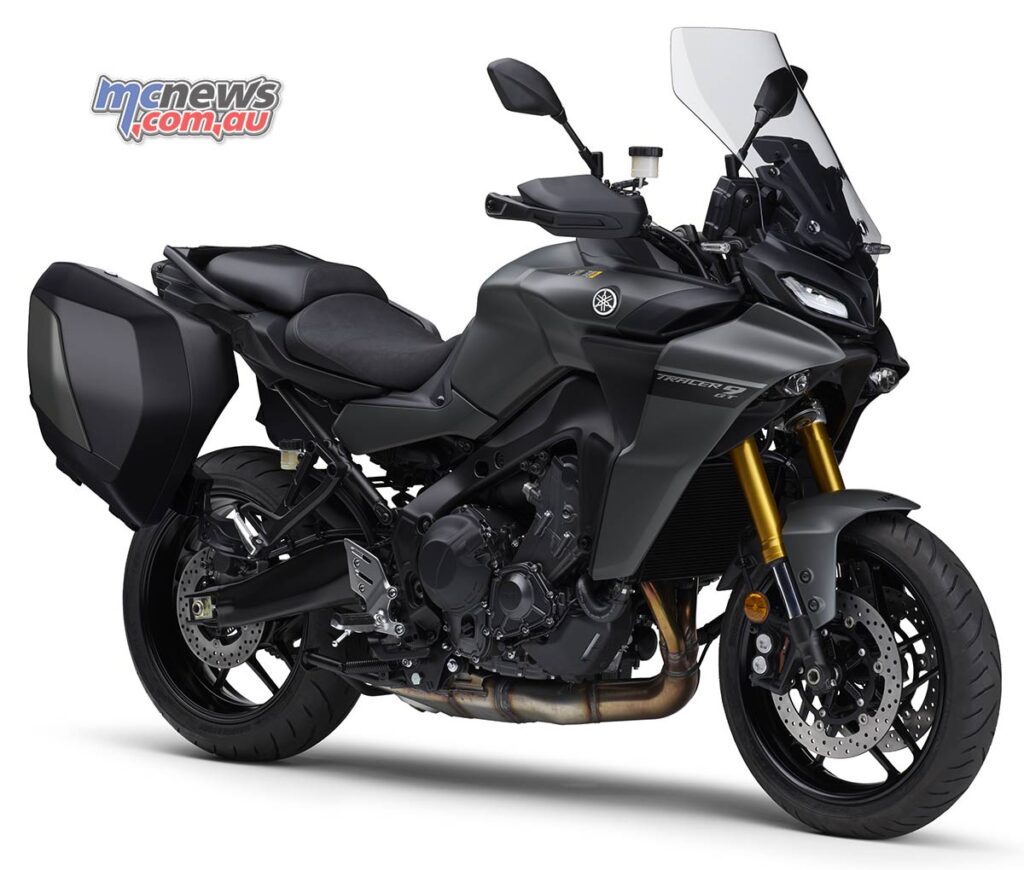
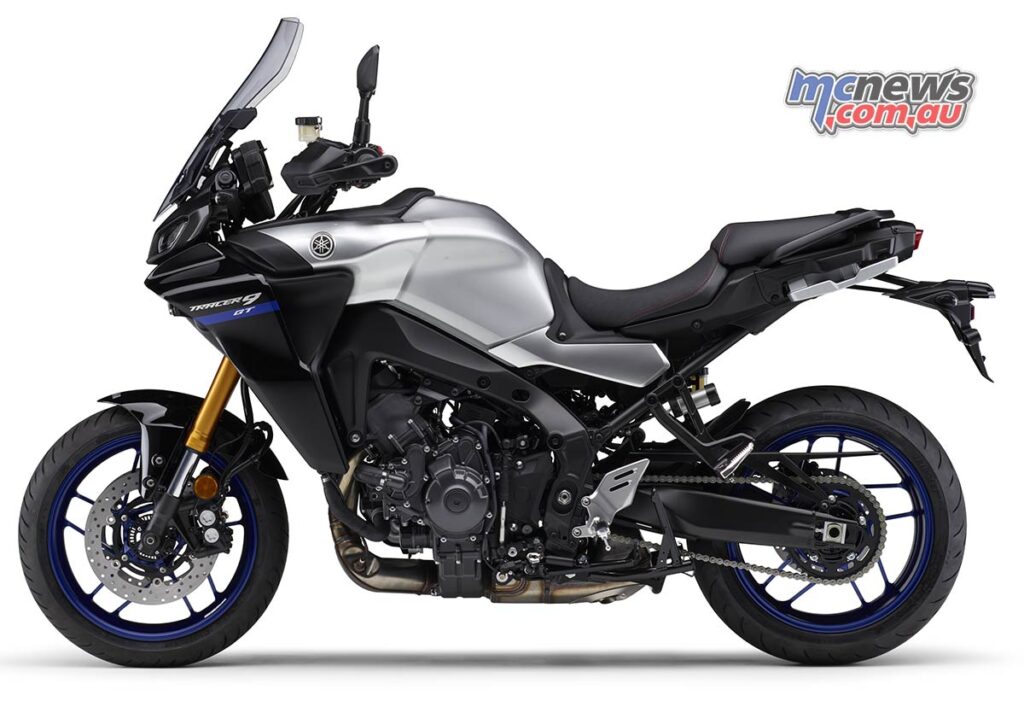
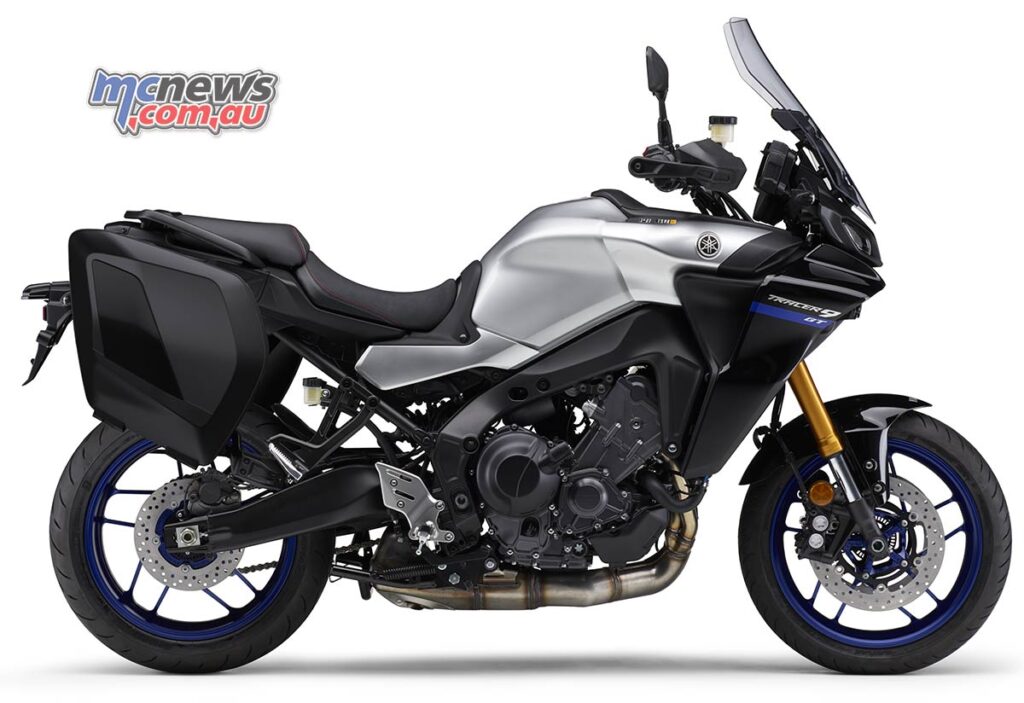
Source: MCNews.com.au
